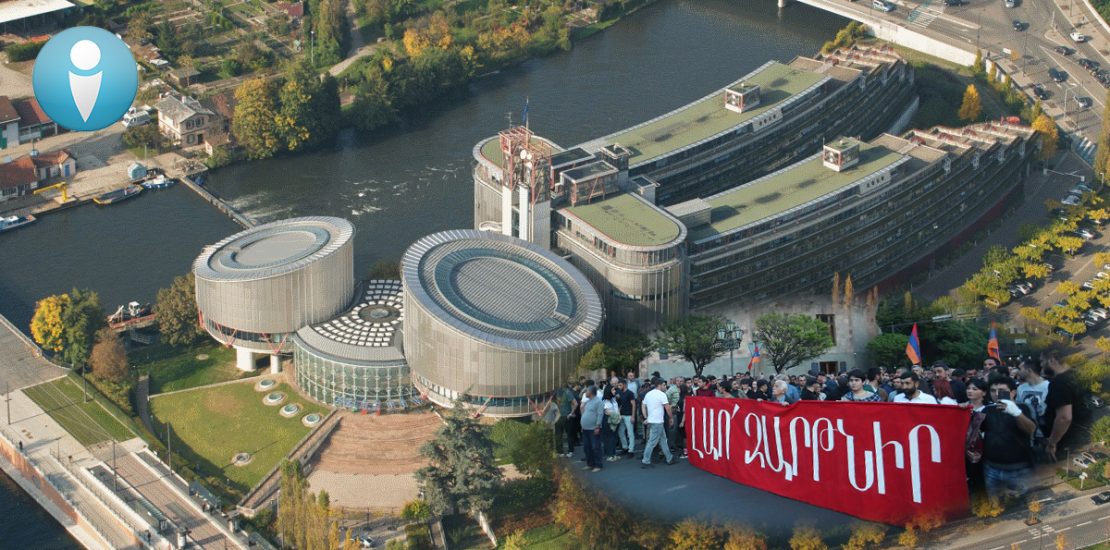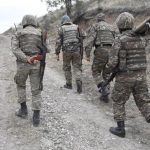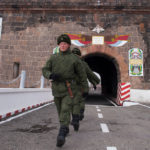- 26 May, 2022
- Democracy and Human Rights

In Yerevan, Armenia, opposition protests have been taking place on a daily basis for about a month now in the framework of which marches are being held, streets are being blocked, and so on. Especially in the light of these events, the debates on the freedom of assembly, not restricting the freedoms of others in exercising that freedom, have become relevant again.
Below we will try to reflect on the ECHR decisions on the above topic and the approaches adopted in international practice.
ECHR decisions
First of all, it should be noted that freedom of assembly is enshrined in the RA Constitution, the European Convention on Human Rights, and the RA Law on Freedom of Assembly. The same law regulates the procedures for informing, organizing and conducting rallies, as well as the rights, responsibilities and powers of the participants of the rallies.
It should be noted that the even though right to freedom of assembly has an independent purpose and a subject of its own use, it is directly related to the right to freedom of of speck and expression, and the right to freedom of speech and expression is one of the goals of exercising the right to freedom of assembly (see ECHR decision in Ezelin v. France, 26 April 1991 § 37). That is, the right to freedom of speech and expression is exercised through organizing and participating in rallies.
Types of rallies include demonstrations, civil disobedience, including car rallies which by their nature can be political actions. The rights and freedoms of other citizens and individuals must be taken into account in the exercise of this right as well as any other right. In particular, blocking streets, roads, highways is an administrative offense in the context of the RA Code on Administrative Offenses and is subject to liability. And if the participant of the rally violates the rights of others, commits a misdemeanor, in that case a coercive measure can be applied to him/her to stop the misdemeanor and to bring him / her to administrative liability later (see ECHR decision in Ezelin v. France, 26 April 1991 § 53).
Նման մոտեցում ՄԻԵԴ-ը արտահայտել է նաև մի շարք այլ գործերով՝ (Բառակոն ընդդեմ Ֆրանսիայի, Կուդրևեչիուսն ընդդեմ Լիտվայի և այլն)։ The European Court of Human Rights has ruled in other cases on the possibility of coercion against citizens in the event of road blocking. In the case of Eva Molnar v. Hungary (7 October 2008), the ECHR stated that freedom of assembly was not unrestricted and could not be used to block roads or paralyze traffic, but to be a means of expression. In this case, the road was blocked for 2 to 6 hours (the time varied in different places), which the European Court found sufficient to express an opinion. The ECHR has expressed similar approach in a number of other cases as well (Barakon v. France, Kudrevičius v. Lithuania, etc.).
Proportionality assessment
Finally, how to assess the limits of assembly restrictions? The concept of proportionality and the elements of interpretation should be discussed here, assessing both the nature of rallies and the actions of the state. If we analyze the positions and approaches of the ECHR on the proportionality of road blocking, we can define that these rules are evaluative categories based on objective facts.
Thus, the purpose of the rally, the methods, means, tools used to achieve that purpose, the duration of the rally (march, demonstration, blocking of roads), the place were important for the ECHR. In other words, what kind of roads are blocked, whether it is an interstate highway or small intra-community unburdened road, how many people’s rights are restricted by these actions, in particular, the right to free movement, what harm they do to individuals and legal entities, to the communities, to the state, to what extent this rally is aimed at protecting the political or civil rights of individuals and how many people participate in these rallies, are of significant importance.
And, of course, it is crucial whether the rallies are peaceful or not. The ECHR has repeatedly stated in its decisions its approach to the number of participants in the rallies and the need of the rally to be non-violent, including in the case of March 1, 2008 Mushegh Saghatelyan v the Republic of Armenia. In this case as well, the ECHR has repeatedly referred to the large number of participants in the rally, the peaceful nature of the rally, which were essential in assessing the actions of the Armenian authorities under Articles 10 and 11 of the European Convention on Human Rights.
Obviously, in all cases, the restriction of the right to freedom of assembly by the state, including the use of coercive measures, must take place in accordance with the known principles – be provided for by law, have a legitimate aim, be necessary in a democratic society, be proportionate. Proportionality, in turn, implies that in cases provided for by law, the use of coercion by the state should be proportionate to the nature of the offense committed, which means that a state serviceman, for example, cannot use unnecessary physical or psychological violence (such a case should be qualified under criminal law).
At the same time, if the offender commits a “reprehensible act”, i.e. commits violence or a threat of violence, presents himself at the rally with a weapon and an object used as weapon, commits other offenses provided by the RA Law on Freedom of Assembly or other laws, as well as he does not stop the offense at the lawful request of the police officer, the police officer may use coercion, and in the case of physical resistance, lawful proportionate force (such force as is necessary, sufficient to stop the offense, to detain the person).
It is noteworthy that the RA Human Rights Defender addressed the issue in her statement, establishing the violations by the police officers (which should at least be the subject of an official investigation) and clearly marking the possible red lines – a “reprehensible act”. act by the participants of the meeting.
Finally, it should be noted that the European Convention on Human Rights and the European Court of Human Rights have set the minimum threshold that member states should aim at, but the tolerance of both Serzh Sargsyan’s government and the current government is much higher than the established threshold.
Vagharsh Aghabekyan
Union of Informed Citizens




